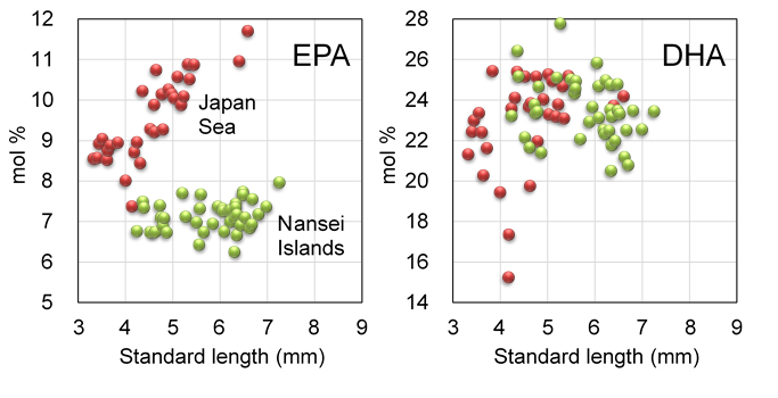The fish oil analysis team routinely analyzes over 500 samples of fatty
acids every year. Recently, we have succeeded in analyzing trace amounts of
fatty acids contained in one larva. By the method of gas
chromatography, we were able to analyze fatty acids in the muscle of
larvae with a length of around 3 mm. This new method will be a powerful tool
for investigating the growth and survival of wild larvae in the future.

Figure: Plots of EPA and DHA
proportions (mol% of total fatty acids) vs. standard lengths of Thunnus orientalis larvae.
The fatty acid analysis
revealed that the EPA content differed according to the sampling area (the Nansei
Islands with high water temperature vs. Sea of Japan with low water
temperature).